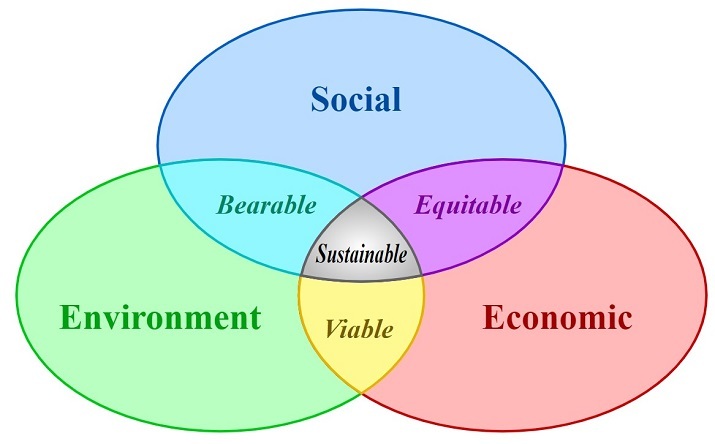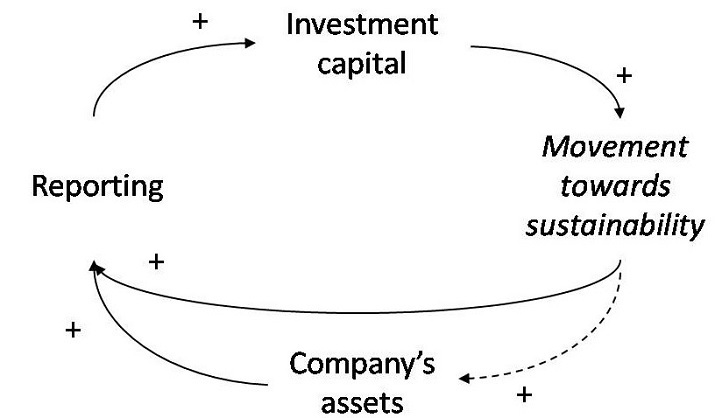
 Data Structure
Data Structure Networking
Networking RDBMS
RDBMS Operating System
Operating System Java
Java MS Excel
MS Excel iOS
iOS HTML
HTML CSS
CSS Android
Android Python
Python C Programming
C Programming C++
C++ C#
C# MongoDB
MongoDB MySQL
MySQL Javascript
Javascript PHP
PHP
- Selected Reading
- UPSC IAS Exams Notes
- Developer's Best Practices
- Questions and Answers
- Effective Resume Writing
- HR Interview Questions
- Computer Glossary
- Who is Who
Core Elements and Goals of Sustainable Development
Introduction: What is Sustainable Development?
Sustainable development is a very important topic in modern economics. Sustainable development refers to present economic development without harming the economic resources and growth of future generations. Often, the word sustainability is used to define sustainable development. It means that we must not compromise the ability of future generations to meet their expectations in terms of economic resources for our own goals in the present. In other words, sustainability is the responsibility we must show for keeping future resources intact while continuing our generation's economic growth.

The notable factor in sustainable development is that there is no guidance on how to achieve the goals. However, the definition of sustainability offers a clear indication that to achieve sustainable development current economic growth must be refined but it should not be challenged.
In many situations, sustainable development is considered conservation. However, since conservation is directly related to economic growth and utility, sustainability means using economic resources responsibly so that future generations do not have to face any issues while trying to meet their economic needs.
Examples of Sustainable Development
Green architecture and other similar constructions
Wind energy is produced and used by windmills
Solar energy and its use
Hydro energy is used in turbines
Rotational crops and other such strategies of agriculture
Plastic recycling plants.
Note
The term ?sustainable development' achieved popularity in the international economic and scientific community after the well-known report ?Our Common Future' was published by the World Commission on Environment and Development in 1987.
Major Characteristics of Sustainable Development

The major characteristics of sustainable development include the following
Natural resources must be used in such a way that they are not wasted or over- exploited. This means that there should be efficiency in the use of energy and resources. We must not over-use any resource and energy efficiency must be at its optimum to conserve it for the long term.
There should be an unhindered increase in per capita income. This means that we must use economic principles for the welfare of society. Increase in per capita income results in better standards of life, making it possible for individuals to contribute to society.
The natural resources available to us must be used in such a way that the requirements of future generations are not compromised due to this. In other words, we must conserve the environment while also improving the standards of life of individuals.
There should be a culture of using biodegradable and environment-friendly products in order to achieve a clean and fresh environment. He4 environment should be as pollution-free as possible so that there is no economic cost for meeting the anomalies caused by pollution. There should be replenishment and refinement of products to conserve resources.
Eco-friendly measures should be applied in all creations so that the environment is not harmed while following our own cultures and traditions. For example, green architecture can be used to better build our property.
Core Elements of Sustainability
Sustainable development rests on three core pillars which are mentioned in the following table
Economic progress |
Environmental Conservation |
Social well-being |
|---|---|---|
Sustainable development focuses on continued economic progress. |
Environmental conservation is a key part of sustainable development |
Sustainability refers to well being of individuals and society at large. |
There should be an increase in people's earnings so that they can live better lives. |
It is impossible to gain sustainability if we do not conserve the environment. |
By applying economic theories, it is possible to improve the standard of living of people. |
Economic progress also refers to the depletion of poverty, unemployment, and lack of information. |
Extinction of species and deforestation are some examples that must be dealt with in order to bring a meaningful and positive change to sustainability. |
For this, the availability of good education, appropriate healthcare, and good quality of life is necessary. |
In order to achieve economic progress, we must; however, not destroy the environmental and social elements. |
Goals of Sustainable Development
There are three main objectives of sustainable development which are as follows
Minimize the cost of natural resources and find alternatives that can help drive dependence on certain items lower than existing benchmarks. For example, finding alternatives to fossil fuels has led to the invention of electric vehicles.
Create an environment that is self-sustainable. In other words, environments that heal and re-grow themselves should be prioritized.
Rebuilding current development so that they can meet the current needs of sustainability. Turning processes into eco-friendly ones is a good example of this.
Apart from these, there are some other goals that are associated with sustainability. These include eradication of poverty, providing good education, access to clean and healthy water, achieving gender equality, access to clean energy, etc.
Principles Underlying Sustainable Development Model
Following are some of the principles underlying the sustainable development model
A symbiotic relationship exists between the consumer and the producer's natural ecosystems.
Sustainable development is a form of development that contains eco-friendliness and resource efficiency.
The current generation should use the resources without compromising the potential availability of the resources for future generations.
The user of resources must be responsible. In other words, if someone is using natural resources, he/she must not over-exploit the resources causing problems for the coming generations. For example, if someone is able to buy a car, he/she must ensure that it does not pollute the environment.
Growth should not be the only goal. Instead, the larger picture must be considered while using the resources.
Sustainable growth has an intricate relationship between people and resources. In the case of the former, the organizations, resources, and service agencies are directly related to the goals of sustainability.
Economic growth that does not involve sustainable goals often fails in the long run.
Sustainable goals are primarily related to the poor and hence it must be ensured that the poor have access to the goals and opportunities arising out of sustainable development.
The past mistakes of environmental destruction must not be repeated as the outcome of such mistakes is dangerous.
The natural environment and economic growth can be compatible and work in unison if required.
Conclusion
We must follow sustainable development goals and properties because, without them, there is no solution for humanity to sustain itself well in the world. As natural resources deplete and we grow recklessly, we may often find it hard enough to get a balance between our policies and the state of the natural environment. That is why everyone must learn what sustainable development is.
FAQs
Qns 1. What is meant by sustainable development? Discuss briefly.
Ans. Sustainable development refers to present economic development without harming the economic resources and growth of future generations. Often, the word sustainability is used to define sustainable development. It means that we must not compromise the ability of future generations to meet their expectations in terms of economic resources for our own goals in the present.
Qns 2. Mention one major characteristic of a sustainable environment.
Ans. There should be an unhindered increase in per capita income. This means that we must use economic principles for the welfare of society.
Qns 3. Give three examples of sustainable development
Ans.
Green architecture and other similar constructions.
Wind energy produced and used by windmills.
Solar energy and its use

